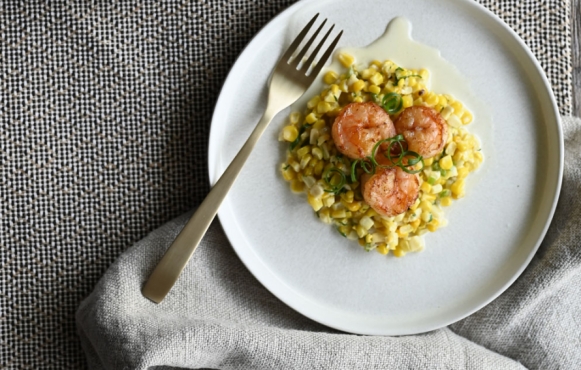Of Grass and Grain

Recipes from the grass family, featuring oats, wild rice and corn.
While we usually leave eating grass for a herd of bison, cows in the pasture or maybe your cat in the backyard, there are a few grasses we do consume, even though most of us don’t think of them as grasses. Barley, rye, sorghum, corn, wild rice, sugar cane, sweet grass and lemongrass are all part of the grass family and we don't find them unusual as part of any meal.
While all grasses are technically edible (be sure to check any plant with an expert before consuming), unlike ruminant animals, we don’t do very well digesting grass cellulose (fibre). If we did eat our fill of grass, it would probably turn into some unpleasant digestive issues. Grazing animals also spend the better part of their day eating. To spend enough time to gain anything in the way of sustenance, we'd have to cut out our doomsday scrolling time allotment. Generally, we prefer to stick to the seed heads or the juices and aromatic oils from lemongrass, sugarcane and wheatgrass.
Other grasses that we might consider lawn weeds or maybe a nuisance around our favourite lake or river can be made into usable food (again, make sure you can identity them properly). Crabgrass, goosegrass, rice grass, wild oat, cockspur and common reed all form seed heads that are usable and digestible.
For us humans, these grass seeds are tiny, but nutritious. They contain between 10 to 20 per cent protein, sugar, iron and vitamins B and C. When dried, all grass seed can be milled and turned into flour. That’s fairly easy for corn or wheat, but that’s a lot of grass seed from your lawn to harvest and mill for your morning pancakes. While consuming grasses may be a regular practice for many of us, let's not go as far as trying to make a Sunday brunch of the front lawn.
Communities Near You
What’s happening near you
ANDARA Gallery Presents: Tara Wilkinson I BARNSCAPES
ANDARA GalleryBloomfield
ANDARA Gallery Presents: ODE TO JOY Holiday Art Show and Sale
ANDARA GalleryBloomfield







